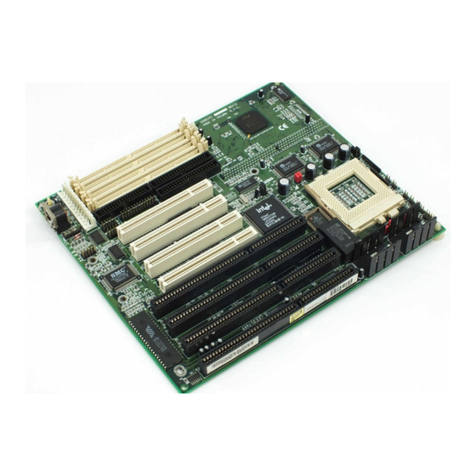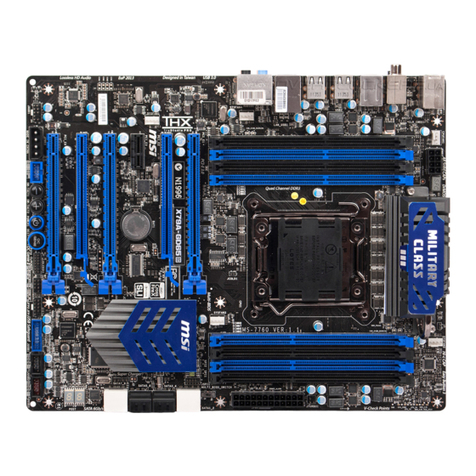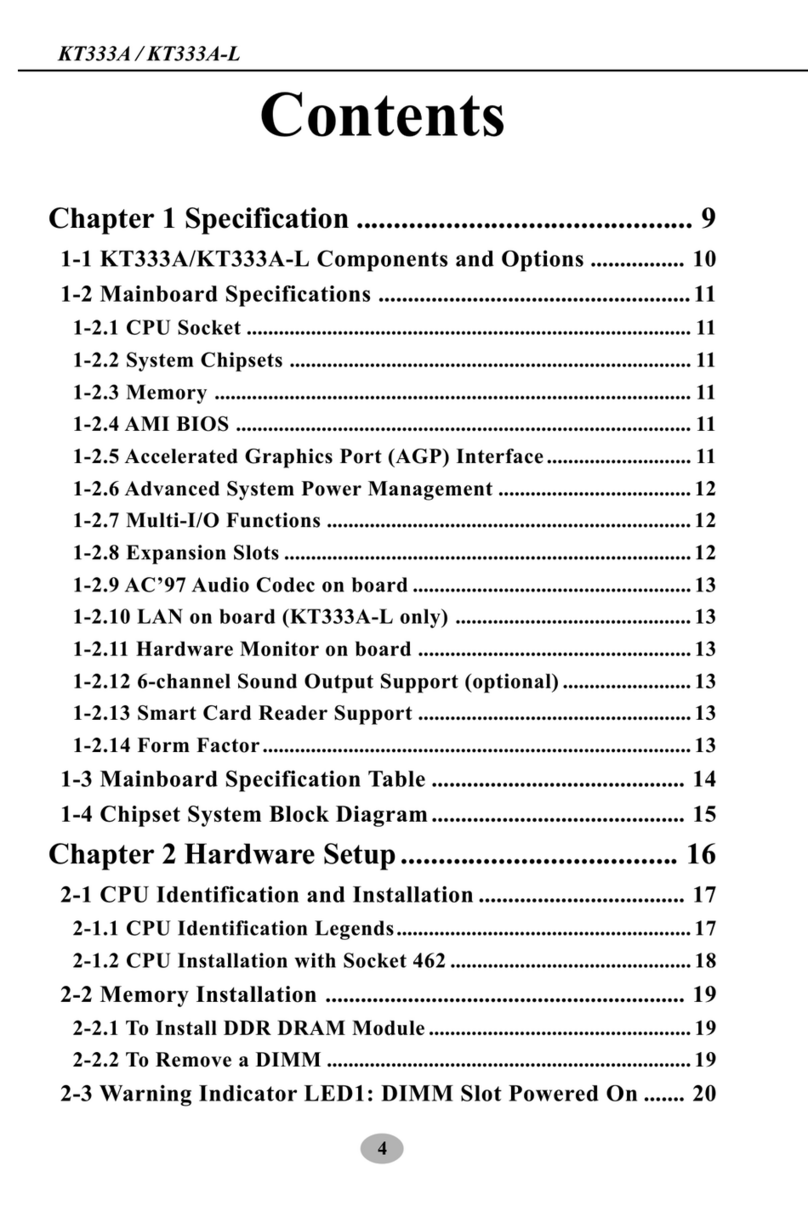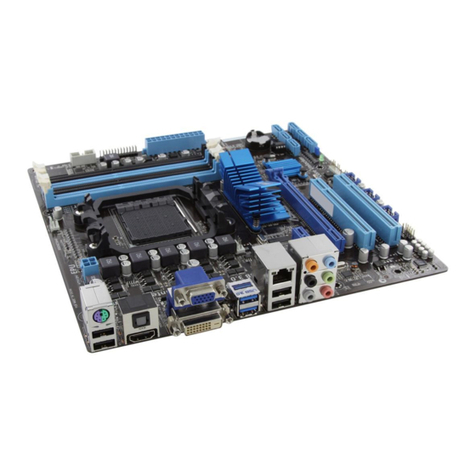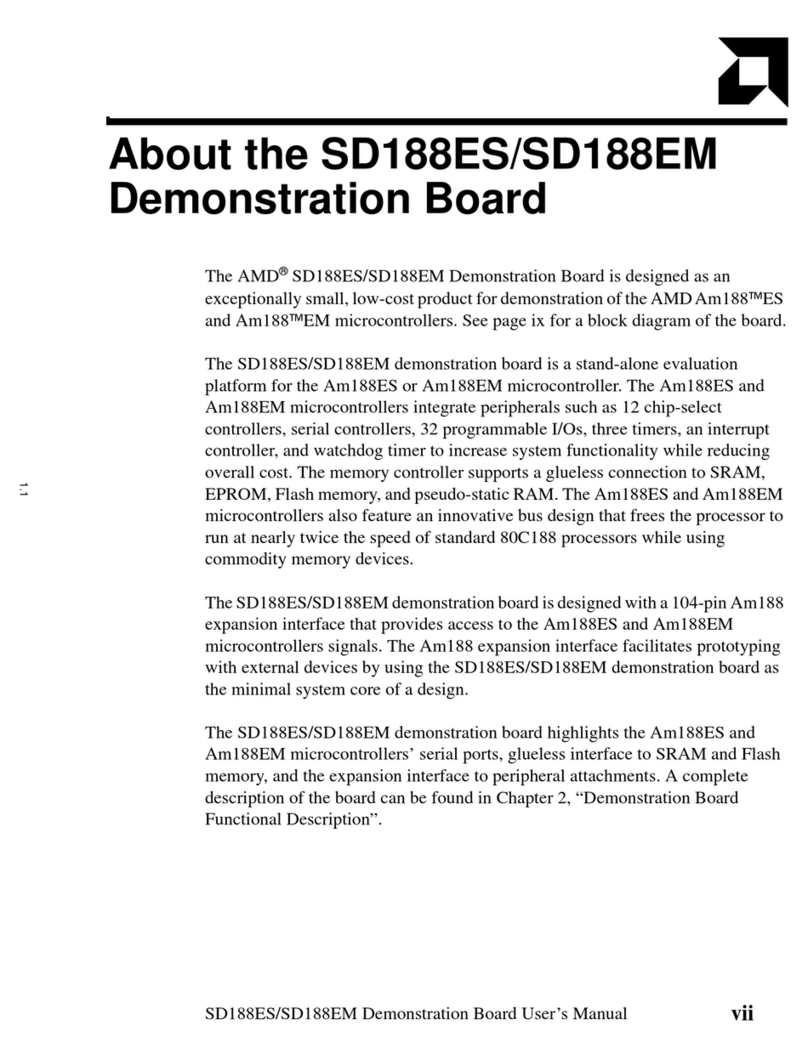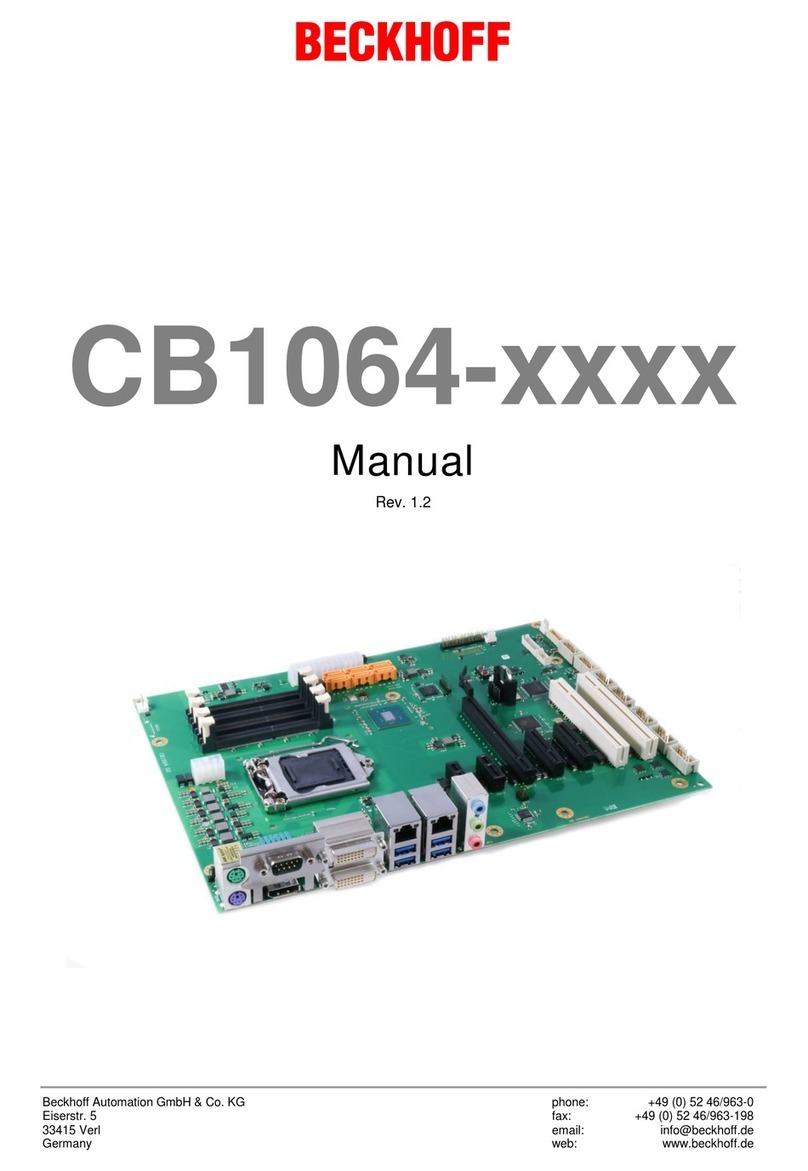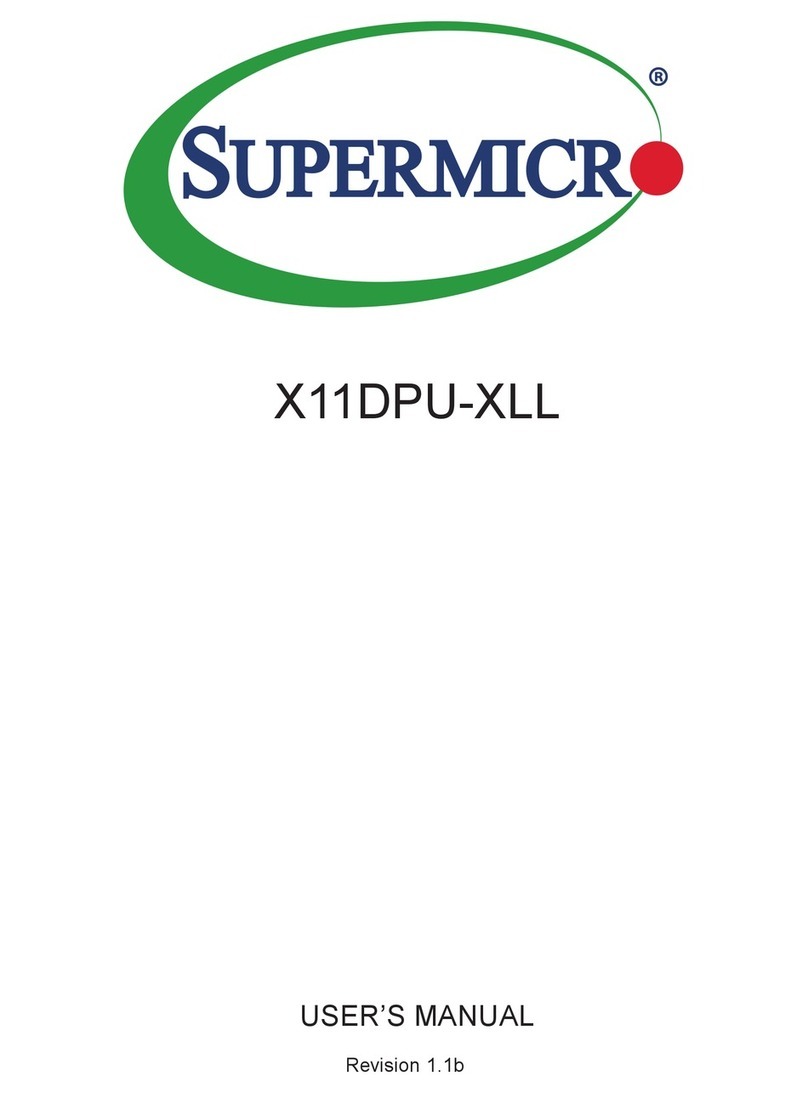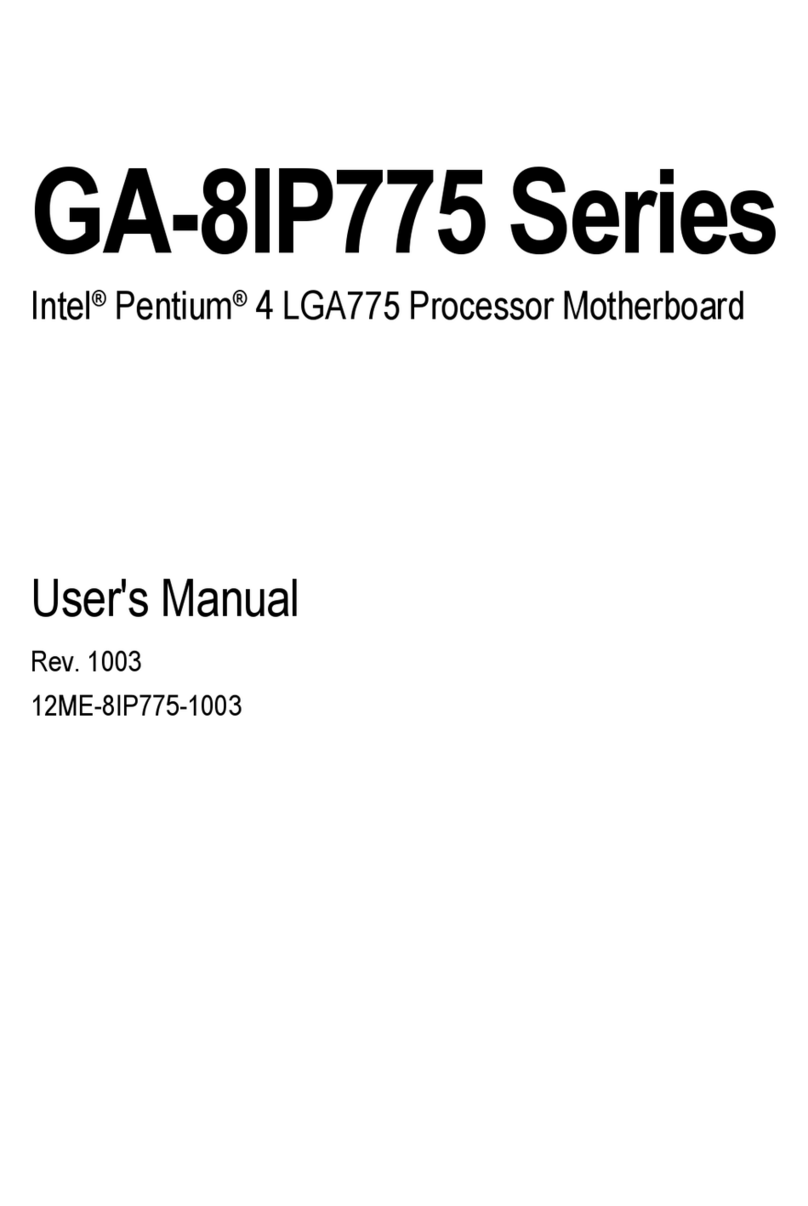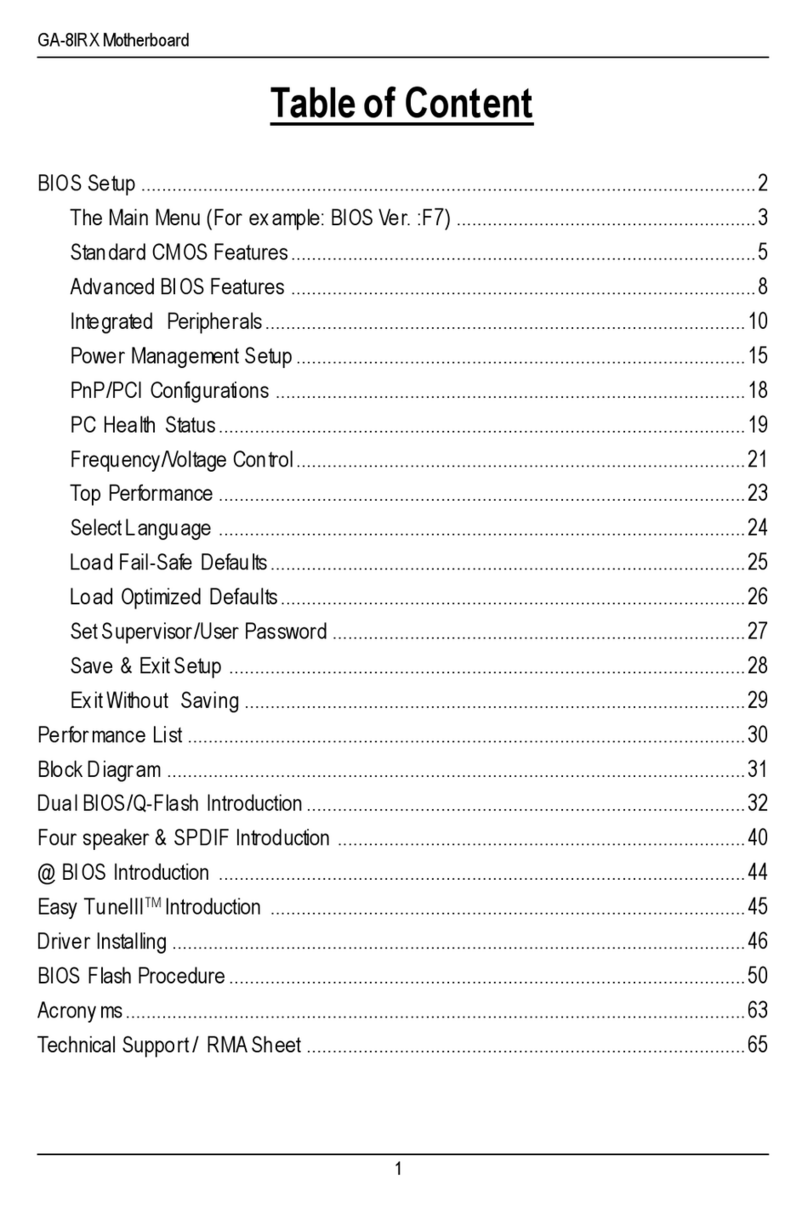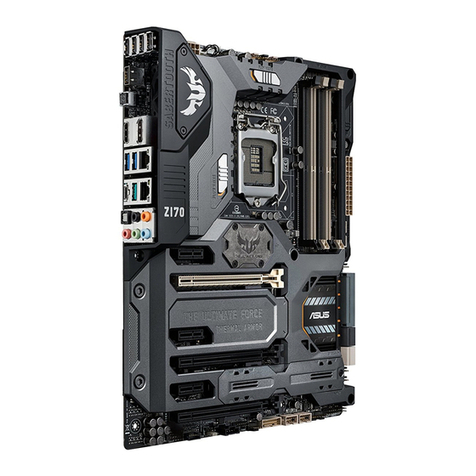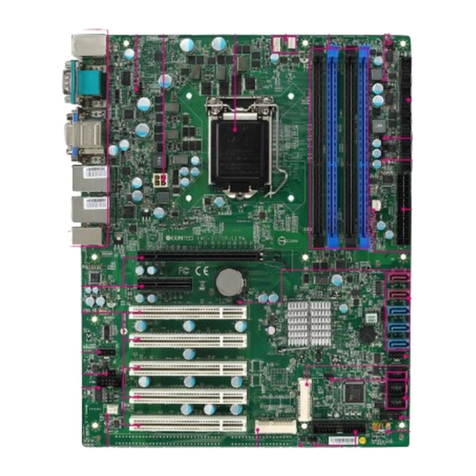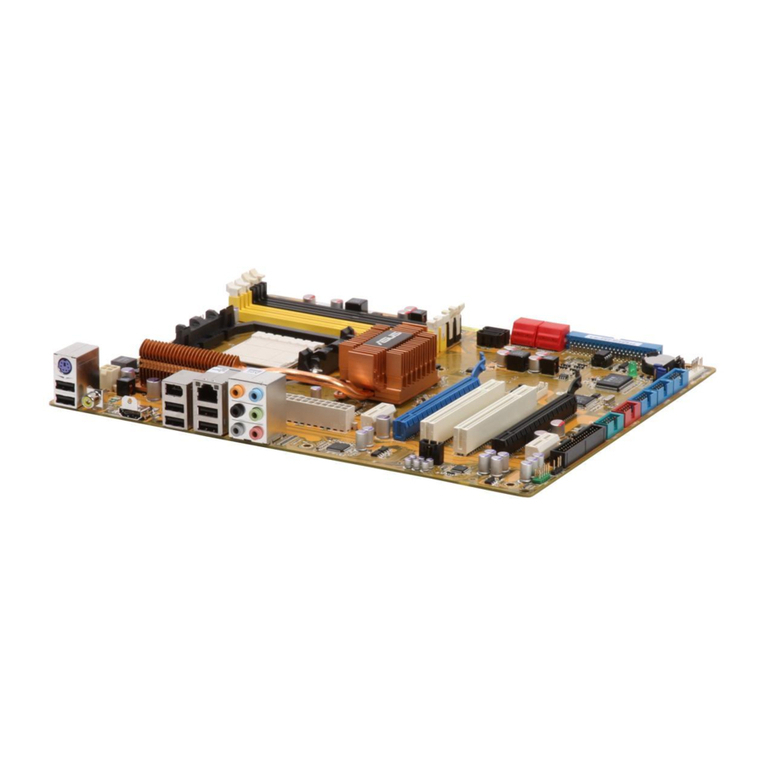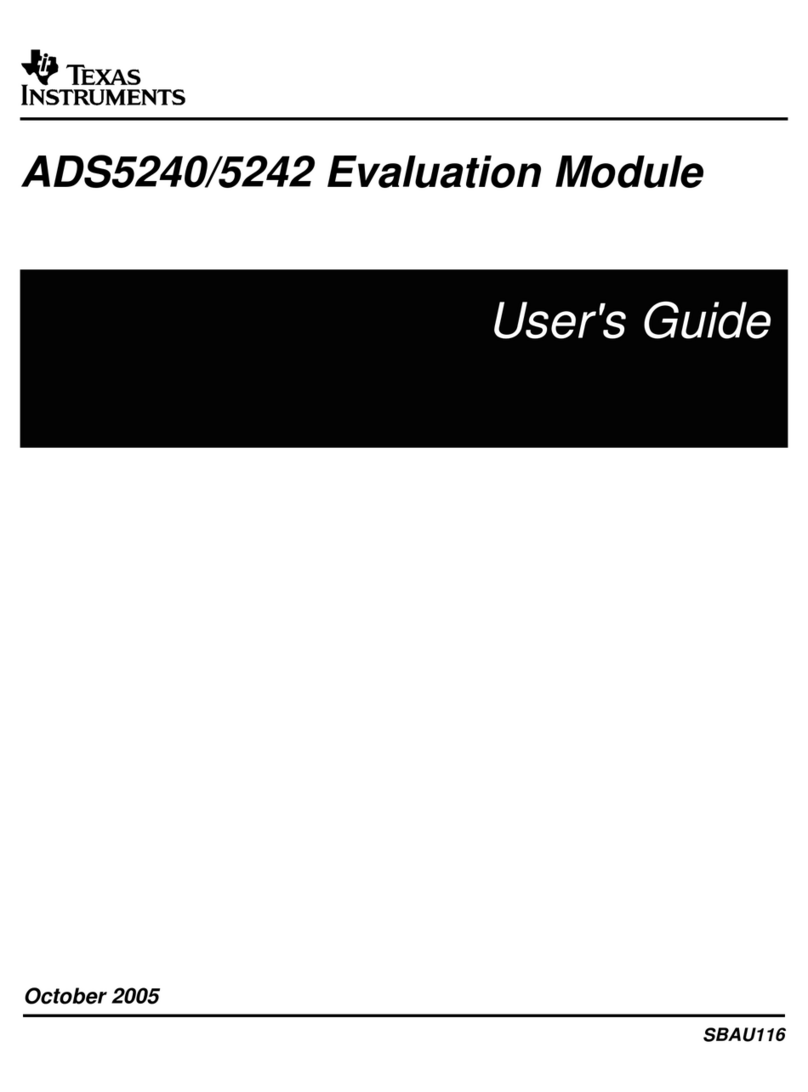Diamond Flower Ink G586SPA User manual

G586SPA
Rev.A+
System Board
User’s Manual
-D30360318-

FCC Statement on Class B
This equipment has been tested and found to comply with the limits for
a Class B digital device, pursuant to Part 15 of the FCC rules. These
limits are designed to provide reasonable protection against harmful in-
terference when the equipment is operated in a residential installation.
This equipment generates, uses and can radiate radio frequency energy
and, if not installed and used in accordance with the instruction manual,
may cause harmful interference to radio communications. However,
there is no guarantee that interference will not occur in a particular in-
stallation. If this equipment does cause harmful interference to radio or
television reception, which can be determined by turning the equipment
off and on, the user is encouraged to try to correct the interference by
one or more of the following measures:
•Reorient or relocate the receiving antenna.
•Increase the separation between the equipment and the receiver.
•Connect the equipment into an outlet on a circuit different from that
to which the receiver is connected.
•Consult the dealer or an experienced radio TV technician for help.
Notice:
1.The changes or modifications not expressly approved by the party
responsible for compliance could void the user's authority to oper-
ate the equipment.
2.Shielded interface cables must be used in order to comply with the
emission limits.

Table of Contents
Chapter 1: Introduction............................................................ 5
Features and Specifications.................................................. 6
Package Checklist .............................................................. 8
Chapter 2: Hardware Installation............................................... 9
Preparing the Area.............................................................. 9
Handling the System Board.................................................. 9
Installing the System Board.................................................10
Board Layout ....................................................................12
System Memory................................................................13
Installing a SIM Module.................................................13
Memory Configuration...................................................14
Cache Memory.................................................................15
Jumper Settings for Cache.............................................16
CPU Installation................................................................16
Jumper Settings for CPU...............................................17
Installing Upgrade CPUs................................................24
Jumper Settings for Display..................................................28
Jumper Settings for PS/2 Mouse...........................................28
Jumper Settings for Password/CMOS Clear.............................28
Jumper Settings for Internal/External Battery...........................29
Factory Testing Jumper.......................................................29
Built-in Ports.....................................................................30
Serial Ports.................................................................30
PS/2 Mouse Port..........................................................31
Parallel Port ................................................................31
Floppy Disk Drive Controller...........................................31
IDE Hard Disk Interface.................................................32
Installing Expansion Cards...................................................34
Chapter 3: Software Installation...............................................35
Award BIOS CMOS Setup Utility...........................................35
Standard CMOS Setup..................................................36
BIOS Features Setup....................................................38
Chipset Features Setup.................................................39
Power Management Setup.............................................40
PCI and Onboard I/O Setup............................................41
Load BIOS Defaults......................................................41

4
Load Setup Defaults.....................................................42
Password Setting.........................................................42
IDE HDD Auto Detection................................................43
HDD Low Level Format .................................................45
Save & Exit Setup........................................................46
Exit Without Saving.......................................................46
System Error Report ..........................................................47
IDE Device Drivers.............................................................49
Chapter 4: Troubleshooting Checklist.............................................50
Appendices
AppendixA: Types of SIM Modules.............................................51
Appendix B: Memory and I/O Maps.............................................52
Appendix C: PCI I/O Pin Assignments..........................................54
Appendix D: ISA I/O Pin Assignments..........................................55
Appendix E: System Overview...................................................56
Appendix F: Connector Pin Assignments......................................58

5
The G586SPA, equipped with a 321-pin Zero Insertion Force (ZIF) CPU
socket, is a fast system board supporting Intel Pentium CPUs running
at 75MHz, 90MHz, 100MHz, 120MHz, 133MHz, 150MHz and 166MHz
frequencies. The G586SPA also supports Cyrix P120+, P133+, P150+,
and P166+ CPUs.
The G586SPA can support 2MB to 256MB of system memory using
EDO or fast page mode x32 or x36 DRAM. This system board also
supports 256KB or 512KB pipeline burst, direct map write-back cache
installed on the system board
The G586SPA design is based on the Peripheral Component Intercon-
nect (PCI) and Industry Standard Architecture (ISA) standards. It is
equipped with 3 dedicated PCI slots, 3 dedicated 16-bit ISA slots and 1
shared PCI/ISA slot.
The G586SPA board has two bus master PCI IDE connectors. Bus
mastering reduces CPU use during disk transfer. This system board is
also equipped with two NS16C550A-compatible serial ports, an SPP/
ECP/EPP parallel port, a floppy disk drive controller, an IrDA header,
one PS/2 mouse port and one PS/2 or AT keyboard connector.
Chapter 1
Introduction

6
Features and Specifications
Processor
•Intel Pentium™ 75/90/100/120/133/150/166MHz
•Future Pentium™ OverDrive processor
•Cyrix P120+, P133+, P150+, or P166+
- Linear burst mode supported
Chipset
•SiS chipset
SiS5511: PCI/ISA system and cache memory controller
SiS5512: PCI local data buffer
SiS5513: PCI system I/O
Cache Memory
•Supports 0KB, 256KB (32Kx32x2) or 512KB (64Kx32x2) pipeline
burst, direct map write-back cache installed on the system board
System Memory
•Four 72-pin SIMM sockets
•2MB to 256MB onboard memory
•Uses EDO or fast page mode x32 or x36 DRAM, 60 or 70 ns, 5V
BIOS
•Award BIOS, Windows 95 Plug and Play compatible
•Flash EPROM for easy BIOS upgrades
Energy Efficient Design
•System power management supported
•CPU stopped clock control
•Hardware supports SMI green mode
•Microsoft/Intel APM 1.1 compliant
•External power management switch supported
PCI IDE Interface
•PIO Mode 3 and Mode 4 Enhanced IDE (data transfer rate up to
16.6MB/sec.)
•DMA Mode 2 Bus Master IDE (data transfer rate up to 22.2MB/
sec.)

7
•Bus mastering reduces CPU utilization during disk transfer
•ATAPI IDE CD-ROM supported
Integrated I/O
•UMC super I/O controller
•Two NS16C550A-compatible high speed UARTS
•One SPP/ECP/EPP
•Supports 360KB, 720KB, 1.2MB, 1.44MB, and 2.88MB floppy
drives
•IrDA supported
CPU Socket
•321-pin ZIF socket (Intel Socket 7)
Connectors
•2 serial ports
•1 parallel port
•2 IDE connectors
•1 floppy connector
•1 PS/2 mouse port
•1 mini-DIN-6 PS/2 keyboard connector or AT keyboard connector
•1 IrDA TX/RX header
Expansion Slots
•3 dedicated PCI slots
•3 dedicated 16-bit ISA slots
•1 shared PCI/ISA slot
PCB
•4 layers, Baby AT form factor
•25cm (9.84") x 22cm (8.66")

8
Package Checklist
The G586SPA package contains the following items:
•The G586SPA system board
•The G586SPA user’s manual
•One 40-pin IDE hard disk cable
•One 34-pin floppy disk drive cable
•One 25-pin printer port cable for chassis mounting
•One card-edge bracket with serial and mouse port cables
•One IDE driver diskette
If any of these items are missing or damaged, please contact your
dealer or sales representative for assistance.

9
Chapter 2
Hardware Installation
This chapter summarizes the steps to install the G586SPA system
board into your system unit. It also includes a description of the area in
which you must work and directions for memory installation. Before in-
stalling the system board, obtain the memory you plan to install. Please
refer to the memory chart on pages 14 and 15 for the number and type
of SIM modules needed for the amount of memory you require.
Preparing the Area
Before unpacking the system board, make sure the location you have
selected is relatively free of dust and static electricity. Excessive expo-
sure to dust, static electricity, direct sunlight, excessive humidity, ex-
treme cold, and water can damage the operational capabilities of your
system board. Avoid placing the unit on surfaces such as carpeted
floors. These areas attract static electricity which can damage circuits
on your system board.
Make sure the power source has a properly grounded, three-pronged
socket. It is essential that the power connection be properly grounded
for correct functioning of your system board. For further protection, we
recommend that you use a surge suppressor. This will protect the sys-
tem board from damage that may result from a power surge on the
electrical line.
Move items that generate magnetic fields away from your system board
since magnetic fields can also damage your system board. Once you
have selected the ideal location, unpack the G586SPA system board
carefully.
Handling the System Board
It is quite easy to inadvertently damage your system board even before
installing it in your system unit. Static electrical discharge can damage
computer components without causing any signs of physical damage.
You must take extra care in handling the system board to ensure
against electrostatic build-up.

10
Static Electricity Precautions
1.To prevent electrostatic build-up, leave the board in its anti-static
bag until you are ready to install it.
2.Wear an antistatic wrist strap.
3.Do all preparation work on a static-free surface with system board
components facing up.
4.Hold the system board only by its edges. Be careful not to touch
any of the components, contacts or connections, especially gold
contacts, on the board.
5.Avoid touching the pins or contacts on all modules and connectors.
Hold modules and connectors by their ends.
Warning:
Electrostatic discharge (ESD) can damage your processor, disk drives,
add-in boards, and other components. Perform the upgrade instruction
procedures described at an ESD workstation only. If such a station is
not available, you can provide some ESD protection by wearing an anti-
static wrist strap and attaching it to a metal part of the system chassis.
If a wrist strap is unavailable, establish and maintain contact with the
system chassis throughout any procedures requiring ESD protection.
Installing the System Board
If you are installing the G586SPA system board, the following outlines
the basic installation steps. Before installing the system board into your
system unit, you should prepare the tools you will need.
You will need:
•One medium size, flat-bladed screwdriver
•One medium Phillips screwdriver
•One needle-nosed pliers
•One nutdriver
1.Unlock your system unit. Turn off the power and disconnect all
power cords and cables.

11
2.Remove the system unit cover. Refer to the manufacturer’s instruc-
tions if necessary.
3.Remove expansion cards seated in any of the expansion slots and
detach all connectors from the old system board.
4.Loosen the screws holding the original system board and remove
the board from the system. Save the screws.
5.Remove the G586SPA from its original packing box. Be careful to
avoid touching all connectors and pins on the board. Please refer to
the handling instructions on pages 9-10 for proper handling tech-
niques.
6.Insert the SIMMs into the SIMM banks on the G586SPA. The quan-
tity and location of the SIMMs depends on the memory configura-
tion and type of modules you intend to use.
7.Install the CPU. Be sure pin 1 of the CPU is aligned with pin 1 of
the socket.
8.Set the corresponding jumpers.
9.Install the prepared G586SPA system board into the case and re-
place the screws.
10.Reinstall all cards and connectors and replace the system unit
cover. Reconnect all power cords and cables.

12
Board Layout
Pin 1
J3
PCI Slot 1
PCI Slot 2
PCI Slot 3
PCI Slot 4
J10 - Printer
J9 - FDCJ11 - Primary IDE
J12 - Secondary IDE
J6 - Power Connector
J7J8
Bank 0Bank 1
JP2
ISA Slot 1
ISA Slot 2
ISA Slot 3
ISA Slot 4
COM B
COM A
SIM1SIM2
SRAM
JP15
SiS
5513
SiS
5512
SiS
5511
SRAM
JP3
JP4
BIOS
JP6
JP9JP8
J14
JP14
JP16
Pin 1
J22J23J21J20J19J18J17J16
J2
U24
UMC
669
J13
JP12
JP13
JP10
JP11
JP5
SIM3SIM4
JP1
U21
U22
J15
Battery
U20

13
Installing a SIM Module
A SIM module simply snaps into a socket on the system board. Pin 1 of
the SIM module must correspond with Pin 1 of the socket.
1.Position the SIMM above the socket with the “notch” in the module
aligned with the “key” on the socket.
2.Seat the module at a 45° angle into the bank. Make sure it is com-
pletely seated. Tilt the module upright until it locks in place in the
socket.
System Memory
The G586SPA system board can support 2MB to 256MB of memory
using 72-pin SIMMs (Single In-line Memory Module). A SIM module
consists of several RAM chips soldered onto a small circuit board.
The SIM sockets are divided into two banks on the system board. Each
bank consists of 2 SIMM sockets. You will need 1 to 4 pieces of SIM
modules, depending on the amount of memory you intend to install.
The G586SPA system board uses 256KBx32/36, 512KBx32/36,
1MBx32/36, 2MBx32/36, 4MBx32/36, 8MBx32/36 and 16MBx32/36
SIMM modules. Refer to page 12 for the locations of the SIMM sockets.
notch
key

14
Memory Configuration
The table below summarizes the bank locations and modules needed
for the corresponding memory sizes.
MemorySize
32-bitmode
4MB
8MB
16MB
32MB
64MB
64-bitmode
2MB
4MB
4MB
6MB
8MB
8MB
10MB
12MB
16MB
16MB
18MB
20MB
24MB
32MB
32MB
34MB
36MB
40MB
48MB
Bank0
SIMM1
1Mx32/x36
2Mx32/x36
4Mx32/x36
8Mx32/x36
16Mx32/x36
256Kx32/x36
256Kx32/x36
512Kx32/x36
512Kx32/x36
512Kx32/x36
1Mx32/x36
1Mx32/x36
1Mx32/x36
1Mx32/x36
2Mx32/x36
2Mx32/x36
2Mx32/x36
2Mx32/x36
2Mx32/x36
4Mx32/x36
4Mx32/x36
4Mx32/x36
4Mx32/x36
4Mx32/x36
SIMM2
—
—
—
—
—
256Kx32/x36
256Kx32/x36
512Kx32/x36
512Kx32/x36
512Kx32/x36
1Mx32/x36
1Mx32/x36
1Mx32/x36
1Mx32/x36
2Mx32/x36
2Mx32/x36
2Mx32/x36
2Mx32/x36
2Mx32/x36
4Mx32/x36
4Mx32/x36
4Mx32/x36
4Mx32/x36
4Mx32/x36
SIMM4
—
—
—
—
—
—
256Kx32/x36
—
256Kx32/x36
512Kx32/x36
—
256Kx32/x36
512Kx32/x36
1Mx32/x36
—
256Kx32/x36
512Kx32/x36
1Mx32/x36
2Mx32/x36
—
256Kx32/x36
512Kx32/x36
1Mx32/x36
2Mx32/x36
Bank1
SIMM3
—
—
—
—
—
—
256Kx32/x36
—
256Kx32/x36
512Kx32/x36
—
256Kx32/x36
512Kx32/x36
1Mx32/x36
—
256Kx32/x36
512Kx32/x36
1Mx32/x36
2Mx32/x36
—
256Kx32/x36
512Kx32/x36
1Mx32/x36
2Mx32/x36

15
Cache Memory
The G586SPA system board supports 256KB or 512KB pipeline burst,
direct map write-back cache installed at locations U21 and U22 of the
system board. Regardless of the amount of cache memory installed,
one 8KBx8, 16KBx8 or 32KBx8 is needed for tag RAM (U20) to store
the cacheable addresses. Refer to page 12 for the locations of the
SRAMs.
MemorySize
64MB
64MB
66MB
68MB
72MB
80MB
96MB
128MB
128MB
130MB
132MB
136MB
144MB
160MB
192MB
256MB
Bank0
SIMM1
4Mx32/x36
8Mx32/x36
8Mx32/x36
8Mx32/x36
8Mx32/x36
8Mx32/x36
8Mx32/x36
8Mx32/x36
16Mx32/x36
16Mx32/x36
16Mx32/x36
16Mx32/x36
16Mx32/x36
16Mx32/x36
16Mx32/x36
16Mx32/x36
SIMM2
4Mx32/x36
8Mx32/x36
8Mx32/x36
8Mx32/x36
8Mx32/x36
8Mx32/x36
8Mx32/x36
8Mx32/x36
16Mx32/x36
16Mx32/x36
16Mx32/x36
16Mx32/x36
16Mx32/x36
16Mx32/x36
16Mx32/x36
16Mx32/x36
SIMM4
4Mx32/x36
—
256Kx32/x36
512Kx32/x36
1Mx32/x36
2Mx32/x36
4Mx32/x36
8Mx32/x36
—
256Kx32/x36
512Kx32/x36
1Mx32/x36
2Mx32/x36
4Mx32/x36
8Mx32/x36
16Mx32/x36
Bank1
SIMM3
4Mx32/x36
—
256Kx32/x36
512Kx32/x36
1Mx32/x36
2Mx32/x36
4Mx32/x36
8Mx32/x36
—
256Kx32/x36
512Kx32/x36
1Mx32/x36
2Mx32/x36
4Mx32/x36
8Mx32/x36
16Mx32/x36
8 Tag Bits7 Tag Bits
1 Dirty Bit
Cacheable Range
64MB
128MB32MB
64MB
Tag SRAM
8KBx8x1
16/32KBx8x1
32KBx32x2
64KBx32x2
Cache Size
256KB
512KB
Data SRAM

16
Note:
You can change the cacheable range of the cache size installed using
the “L2 (WB) Tag Bit Length” option in the Chipset Features Setup of
the Award BIOS utility.
Jumper Settings for Cache
Jumper JP10
Cache Memory Select
Jumper JP11
L1 Cache Mode
12
3
1-2On:Write-back
(Default)
12
3
2-3On:512KB
1
2
3
2-3On: Write-through
12
3
1-2On:256KB
(Default)
Note:
Everytime you reset JP11, the “L1 Cache Update Mode” option in the
Chipset Features Setup of the Award BIOS utility must be changed
accordingly.
CPU Installation
The G586SPA allows for easy installation of CPUs. Make sure all
jumpers are set correctly before applying power or you may damage
the CPU or system board. Use the needle-nosed plier to move the
jumpers as necessary. Please see the jumper settings on the next
page.

17
Jumper Settings for CPUs
Intel 90MHz CPU:External Speed: 60MHz
Frequency Ratio: 1.5x
JP3
JP4
JP12
JP13
4
6
2
3
5
1
4
6
2
3
5
1
JP14
JP16
2
3
1
JP15
JP3
JP4
JP12
JP13
4
6
2
3
5
1
4
6
2
3
5
1
JP14
JP16
2
3
1
JP15
Intel 75MHz CPU:External Speed: 50MHz
Frequency Ratio: 1.5x

18
Intel 120MHz CPU:External Speed: 60MHz
Frequency Ratio: 2x
JP3
JP4
JP12
JP13
4
6
2
3
5
1
4
6
2
3
5
1
JP14
JP16
2
3
1
JP15
JP3
JP4
JP12
JP13
4
6
2
3
5
1
4
6
2
3
5
1
JP14
JP16
2
3
1
JP15
Intel 100MHz CPU*:External Speed: 66MHz
Frequency Ratio: 1.5x

19
Intel 150MHz CPU:External Speed: 60MHz
Frequency Ratio: 2.5x
JP3
JP4
JP12
JP13
4
6
2
3
5
1
4
6
2
3
5
1
JP14
JP16
2
3
1
JP15
JP3
JP4
JP12
JP13
4
6
2
3
5
1
4
6
2
3
5
1
JP14
JP16
2
3
1
JP15
Intel 133MHz CPU:External Speed: 66MHz
Frequency Ratio: 2x

20
Intel 180MHz CPU:External Speed: 60MHz
Frequency Ratio: 3x
JP3
JP4
JP12
JP13
4
6
2
3
5
1
4
6
2
3
5
1
JP14
JP16
2
3
1
JP15
JP3
JP4
JP12
JP13
4
6
2
3
5
1
4
6
2
3
5
1
JP14
JP16
2
3
1
JP15
Intel 166MHz CPU:External Speed: 66MHz
Frequency Ratio: 2.5x
Table of contents
